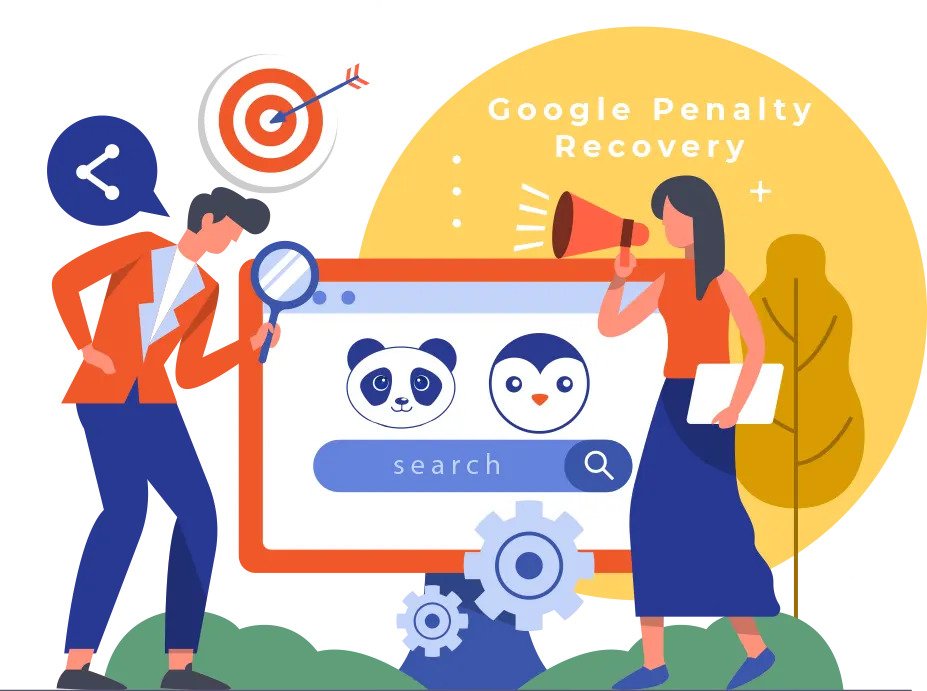What Are Search Engine Penalties
Search engine penalties are sanctions imposed by search engines like Google on websites that violate their guidelines or engage in practices deemed manipulative or harmful to the quality of search results. These penalties can result in a significant drop in rankings, loss of organic traffic, or even complete removal from search engine indexes.

Search engine penalties are typically categorized into two types:
- Manual Penalties: These are imposed by a human reviewer at the search engine (e.g., Google’s Webspam team). If a website is found to be violating guidelines, it may be manually penalized, which usually leads to a clear notification via Google Search Console.
- Algorithmic Penalties: These are automatic penalties triggered by changes to a search engine’s algorithm (e.g., Google’s Penguin, Panda, or Core updates). Unlike manual penalties, algorithmic penalties do not involve human review, and the impact may not be immediately obvious unless you notice a traffic drop after an algorithm update.
Common Causes of Search Engine Penalties
- Keyword Stuffing: Overuse of keywords in an unnatural way to try to manipulate rankings.
- Link Schemes: Engaging in link building practices that violate search engine guidelines, such as buying links, participating in link farms, or exchanging links excessively.
- Thin or Duplicate Content: Pages with little or no valuable content, or duplicate content from other sources, which can confuse search engines and provide a poor user experience.
- Cloaking and Sneaky Redirects: Showing different content to search engines than what is shown to users, or using deceptive redirects to manipulate rankings.
- Hidden Text or Links: Placing text or links on a page in a way that is visible to search engines but not users (e.g., white text on a white background).
- Spammy Behavior: Such as creating doorway pages or over-optimization that results in a poor user experience.
- Poor User Experience (UX): Factors like slow load times, intrusive pop-ups, poor mobile optimization, or other usability issues may negatively affect rankings.
How to Recover from a Search Engine Penalty
1. Identify the Penalty Type
- Manual Penalty: Check your Google Search Console account. If your site has been manually penalized, Google typically sends a notification outlining the violation and a recovery path.
- Algorithmic Penalty: Identify traffic drops that correlate with algorithm updates. Use tools like Google Analytics or a rank tracking tool to spot when the drop occurred and what may have caused it.
2. Fix the Issues
- Address Content Issues: Remove or improve low-quality or duplicate content. Focus on providing valuable, original, and comprehensive content that serves user intent.
- Disavow Bad Backlinks: Use Google’s Disavow Tool to reject harmful backlinks that might be penalizing your site. Identify toxic links using tools like Ahrefs, SEMrush, or Google Search Console.
- Remove or Edit Unnatural Links: If you have participated in any link schemes or bought links, remove them and replace them with natural, high-quality backlinks.
- Fix Technical Issues: Resolve issues like slow page load times, broken links, and mobile optimization problems. Ensure your site is accessible, secure (HTTPS), and provides a positive user experience.
- Avoid Cloaking and Sneaky Practices: Make sure your website doesn’t employ any cloaking, hidden text, or deceptive redirects.
3. Submit a Reconsideration Request (for Manual Penalties)
If you’ve received a manual penalty and fixed the issues identified by Google, you can submit a reconsideration request through Google Search Console. In your request:
- Be transparent and detailed about what changes you made.
- Show that you understand the guidelines and have taken corrective actions.
- Be patient, as it can take time for Google to review and lift the penalty.
4. Monitor Progress
After making changes and submitting any necessary requests, it’s essential to monitor your site’s performance. Keep an eye on:
- Traffic patterns: Use Google Analytics to see if your traffic begins to recover.
- Search rankings: Track keyword rankings to see if your site starts to move back up in search results.
- Search Console: If the penalty was manual, keep checking Search Console for updates on your reconsideration request status.
5. Continue to Follow Best Practices
Even after recovery, it’s essential to maintain good SEO practices to avoid future penalties. This includes:
- Regularly updating and improving content.
- Focusing on high-quality, natural backlinks.
- Ensuring your website provides a good user experience.
- Staying updated on algorithm changes and best practices.
Prevention Tips for Avoiding Future Penalties
- Follow Search Engine Guidelines: Familiarize yourself with Google’s Webmaster Guidelines and the guidelines of other search engines to ensure your site aligns with their standards.
- Prioritize Quality Content: Focus on producing unique, valuable, and user-friendly content that answers users’ questions and solves their problems.
- Natural Link Building: Build links organically by creating shareable content, engaging in outreach, and earning high-quality backlinks through relationships and relevant content.
- Avoid Over-Optimization: Ensure that your SEO efforts are natural and not manipulative. This includes avoiding keyword stuffing and unnatural link-building practices.
- Stay Informed: SEO is an ever-evolving field, so it’s important to keep up with industry news, algorithm updates, and best practices.
Conclusion
Recovering from a search engine penalty requires a thorough analysis of the issue, making the necessary fixes, and following up with the search engine to request a penalty removal. The key to long-term success is to focus on providing valuable, high-quality content and adhering to search engine guidelines, which will help protect your site from penalties in the future.